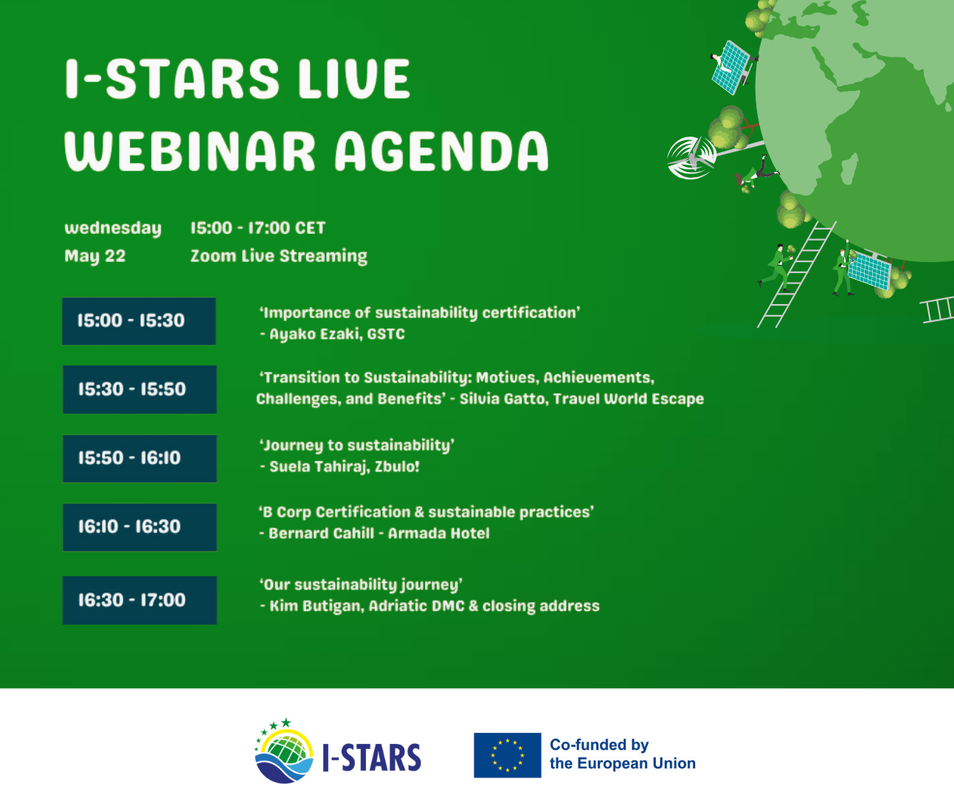We are excited to announce the third Live webinar organised within the framework of the I-STARS project entitled "Navigating the I-STARS Journey: Insights and Benefits for Sustainable Tourism MSMEs".
Date: Wednesday, 26th June 2024
Time: 15:00 - 16:30 CET
Where: Zoom Online
Language: English
We are excited to announce this informative webinar featuring six distinguished tourism businesses from Cyprus, Greece, Ireland, Italy and Spain who received the I-STARS grant supporting them in their transition journey towards sustainability. During the webinar they will present their experiences and insights on their I-STARS sustainability journey.
This event aims to provide valuable information and inspiration for other businesses looking to enhance their sustainability practices.
We will also be joined by the I-STARS experts who will provide an update on the current stage of the I-STARS sustainability journey with their business clients and the significance of the I-STARS journey for modern tourism enterprises.
This event promises to be an enlightening session for all attendees, offering practical knowledge and real-world experiences from businesses and consultants deeply engaged in the I-STARS project.
Join us to discover how the I-STARS grant can support your sustainability goals and drive your business towards a greener future.
Register here now to receive your Zoom link!
For more information, please contact the I-STARS eLearning helpdesk, [email protected].
Follow the I-STARS project on Facebook and LinkedIn.
Date: Wednesday, 26th June 2024
Time: 15:00 - 16:30 CET
Where: Zoom Online
Language: English
We are excited to announce this informative webinar featuring six distinguished tourism businesses from Cyprus, Greece, Ireland, Italy and Spain who received the I-STARS grant supporting them in their transition journey towards sustainability. During the webinar they will present their experiences and insights on their I-STARS sustainability journey.
This event aims to provide valuable information and inspiration for other businesses looking to enhance their sustainability practices.
We will also be joined by the I-STARS experts who will provide an update on the current stage of the I-STARS sustainability journey with their business clients and the significance of the I-STARS journey for modern tourism enterprises.
This event promises to be an enlightening session for all attendees, offering practical knowledge and real-world experiences from businesses and consultants deeply engaged in the I-STARS project.
Join us to discover how the I-STARS grant can support your sustainability goals and drive your business towards a greener future.
Register here now to receive your Zoom link!
For more information, please contact the I-STARS eLearning helpdesk, [email protected].
Follow the I-STARS project on Facebook and LinkedIn.






 RSS Feed
RSS Feed
